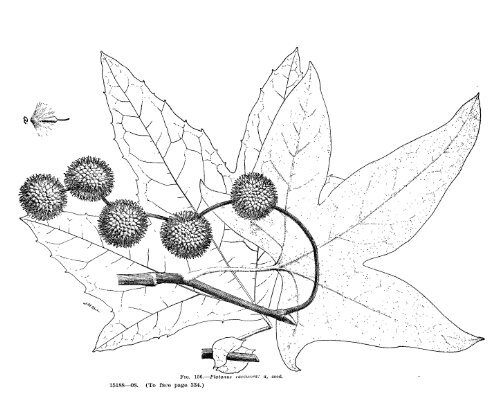De I. VNER VEW D Forest Trees of the Pacific Slope
De I. VNER VEW D Forest Trees of the Pacific Slope
De I. VNER VEW D Forest Trees of the Pacific Slope
You also want an ePaper? Increase the reach of your titles
YUMPU automatically turns print PDFs into web optimized ePapers that Google loves.
FOREST TREES OF THE PACIFIC SLOPE.<br />
RANGE.<br />
California coast region in an interrupted belt from Mendocino County to San Diego<br />
County; sea-level to nearly 3,000 feet. Extends from UJkiab and plains <strong>of</strong> Mendocino<br />
County to mountains at sou<strong>the</strong>rn boundary <strong>of</strong> <strong>the</strong> State. Ascends canyons in central<br />
California coast mountains to nearly 3,000 feet. Sonoma County: Noted in western part<br />
<strong>of</strong> Green Valley on road between Sebastopol and Camp Meeker (about 3 miles cast <strong>of</strong><br />
Meeker) ; Dutch Bill Gulch, a little below Camp Meeker, on road from Meeker to Monte<br />
Rio. Lake County: East side <strong>of</strong> Mount St. Helena, on road from Toll House to Middletown,<br />
extending from an altitude <strong>of</strong> about 1,500 feet down to valley level for about 5<br />
miles south <strong>of</strong> Middletown; few miles northwest <strong>of</strong> Middletown on gulch slope north <strong>of</strong><br />
road to Cobb Valley. Marin County: West end crest <strong>of</strong> Mount Tamalpais. Alameda<br />
County: Cedar Mountain. Monterey County: Small grove on north side <strong>of</strong> Huckleberry<br />
Hill (Monterey Peninsula, near Monterey), at 300 to 350 feet (probably type locality <strong>of</strong><br />
species). Sandy barrens and rocky slopes <strong>of</strong> Santa Lucia Mountains, at 1,000 to 3,000<br />
feet, only near Los Burros, and extending over summit. San Luis Obispo National <strong>Forest</strong>,<br />
from Cerro Alto sou<strong>the</strong>astward, as well as in main canyons trending eastward, at 1,100<br />
to 2,500 feet elevation. San Diego County: In Jamul Valley between El Nido and Dulzura,<br />
near Mexican border (sou<strong>the</strong>rn limit).<br />
OCCURRENCE.<br />
On sandy barrens or rocky slopes, canyons, and gulches, commonly in very dry soils <strong>of</strong><br />
poorest kind. On summits and low mountain slopes <strong>of</strong> central California coast region,<br />
a shrub on dry, shallow soil overlying granitic or limestone rock; largest near mountain<br />
streams.<br />
Occurs scattered, as individuals, or in groves, and <strong>of</strong>ten in broken forest over extensive<br />
tracts; nowhere abundant. Associates on slopes with Coulter pine, and near streams<br />
with Douglas fir and western yellow pine.<br />
CLIMATIC CONDITIOxS.-Climate mild; temperature, between 12° an 1120 F., and annual<br />
rainfall from 53 inches in north to 5 inches at south. Proximity to sea insures frequent<br />
fogs and high humidity during most <strong>of</strong> year.<br />
TOLERANCE.-Tolerates considerable shade, <strong>of</strong>ten growing in ra<strong>the</strong>r dense stands.<br />
REPRoDtCcTIoN.-ProlifiC seeder, bearing cones abundantly when only 2 or 3 feet high.<br />
Seed has moderately high rate <strong>of</strong> germination and persistent vitality. Reproduction<br />
abundant near seed trees, where seedlings are <strong>of</strong>ten established in great numbers.<br />
Dwarf Cypress.<br />
Cupressus pygmaca (Lemm.) Sargent.<br />
DISTINGUISHING CHARACTERISTICS.<br />
Dwarf cypress, a small and unimportant species, was, until a dozen years ago,<br />
considered only a dwarfed form <strong>of</strong> Gowen cypress, which it resembles so closely,<br />
except in size and habit, that <strong>the</strong> casual or lay observer can not readily distinguish<br />
it. Stunted on extremely poor soil, it is bushy and bears cones when under<br />
feet in height. In situations more favorable for growth it is from 10 to 25<br />
feet high-very rarely 30 feet-and from 6 to 12 inches in diameter. The<br />
trunk is conical, and <strong>the</strong> crown narrowly conical, with slender branches trending<br />
upward. The shallowly seamed bark <strong>of</strong> large trunks is thin, clear redbrown,<br />
and differs from that <strong>of</strong> <strong>the</strong> Gowen cypress in having its flat ridges<br />
divided into long, shreddy scales. In general appearance <strong>the</strong> scale-like leaves<br />
(fig. 63) resemble those <strong>of</strong> <strong>the</strong> Gowen cypress, but <strong>the</strong>y differ from <strong>the</strong>m distinctly<br />
in being entirely without <strong>the</strong> glandular pits on <strong>the</strong> back, which are<br />
always found on some <strong>of</strong> <strong>the</strong> leaves <strong>of</strong> <strong>the</strong> o<strong>the</strong>r species. The cones (fig. 63)<br />
mature by autumn <strong>of</strong> <strong>the</strong> second season and remain on <strong>the</strong> branches for a long<br />
time after <strong>the</strong>ir seeds are shed. They vary from five-eighths to seven-eighths<br />
<strong>of</strong> an inch in <strong>the</strong> longer diameter; o<strong>the</strong>rwise <strong>the</strong>y are similar to <strong>the</strong> smaller<br />
cones <strong>of</strong> Gowen cypress. Cone-scales range in number from 6 to 10 (instead <strong>of</strong><br />
C to 8, as in <strong>the</strong> Gowen cypress), while <strong>the</strong> smaller seeds (fig. 63, a) are black<br />
when mature, and only about 10 or fewer are borne under each perfect cone-<br />
163

















